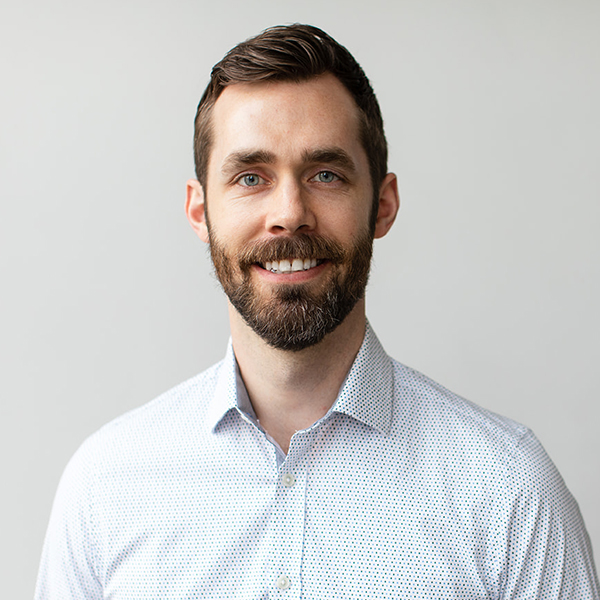“Health” for men may look different as we move in and out of the different phases of life. Our physical and mental health changes each decade, and it is important to be aware of some of these changes so we can optimize our well-being.
International Men’s Health week — June 12 – 18, the week leading up to Father’s Day — serves as a reminder to boys and men of all ages to make their health a priority. For many of us, life gets busy, and time slips by, often while we inadvertently neglect things like regular check-ups and health screenings.
I am 33 years old and until last week, I had not been to the doctor for a physical in more than three years. It had been so long that I had to register as a “new patient” because my doctor’s office discharged me as a patient after 3 years.
For me, life had gotten busy. My wife and I had kids, COVID hit, I was focused on my career, and I kept putting off the doctor’s visit because I was feeling healthy.
In addition to putting off the doctor, my exercise routine has fallen off since having children. Previously, I did CrossFit multiple days per week, and I was active on the weekends hiking or skiing. Now with morning routines full of getting the kids up and ready, daycare drop off, and evening bedtime routines, I am exhausted and unable to go to the gym. In addition, my budget has become constrained with two kids in daycare and finding motivation for home workouts is a definite struggle. I am in the very bind I instruct my patients about. The hypocrisy is a real struggle. Since I have become a parent, I have had a greater understanding of how one can come to sacrifice their own well-being and healthy habits by putting their energy into their children’s well-being.
Thankfully for me, everything at my checkup was great, but my doctor emphatically reminded me of the importance of regular doctor checkups, even for seemingly healthy younger men.
While at my wellness visit, I learned that the risk for testicular cancer peaks when men are in their late 20s to early 30s. My doctor told me that from now on, my risk declines every year. That also means that I did not see my physician during the period when my risk was greatest.
If you did not know, men are supposed to do monthly self-checks to increase the likelihood of early detection of testicular cancer, which leads to the best outcomes. Admittedly, many if not most of us probably perform these self-checks right before and directly after our doctor appointments, but do not otherwise remember.

It is also worth knowing that the age for cardiovascular disease risk is getting younger and affecting men in their 30s. This decade is a critical time to pay attention to heart health — exercising regularly, eating a heart-healthy diet, and going to those annual check-ups where your doctor will likely begin to monitor your blood pressure and cholesterol levels.
Other age-related physical changes sometimes seem to come out of nowhere. When we are in our teens and early 20s, we can ski off a cliff and tumble down a mountain unscathed. Enter the 3rd and 4th decades of life, however, and suddenly we are trying to come up with a creative story about how we hurt our back … bending over to pick up your infant son does not make for as good of a story. Ask me how I know.
The prevalence of herniated discs is highest when men are in their 20s and 30s. Then, while the likelihood of herniations diminishes as men reach their 50s and beyond, degenerative changes become more prominent, leading to an increased prevalence of lumbar stenosis, arthritis and degenerative disc disease.
The moral of the story? It is important to maintain physical fitness in every decade of life, even if the types of activities change with age.

In addition to regular check-ups and health screenings, maintaining physical fitness is crucial for optimizing men’s health in every phase of life. Physical therapy can play a significant role in helping men address and manage the physical changes that occur as they age. A PT can provide valuable support in developing new exercise regimens, including home workouts tailored to individual situations such as busy schedules and limited resources. Moreover, physical therapists can address specific concerns related to postural issues or muscle imbalances that may arise.
As I get older, the definition of “old” seems to be a sliding scale. I once looked at 40 as being so far away and categorized people in their 40s as old or over the hill. Now that I have close friends in their 40s, the defining age of “old” has become whatever age my parents are. Despite how we feel, our physical abilities change, and it happens whether we want it to or not. I encourage you to develop good habits of diet, exercise and doctors’ wellness visits now for whatever stage of life you are in and carry these habits with you forever. If you are like me and have fallen out of these good habits, it is never too late to take small steps to get back on track. My small step was a visit to my doctor.

Start your physical therapy journey today.
By including physical therapy as a proactive approach to men’s health, individuals can gain the tools and knowledge necessary to address physical changes, prevent injuries, and maintain optimal physical function throughout their lives.

